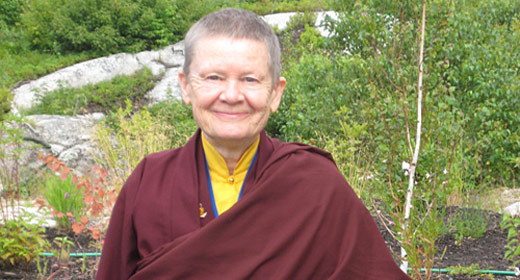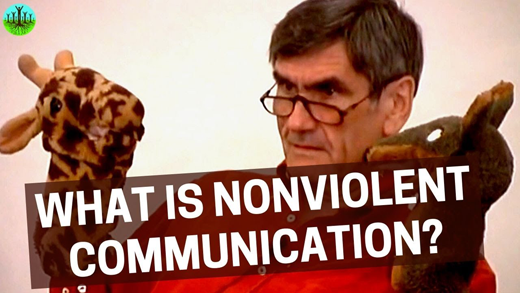by Matt Toussaint: Trance can be defined as a specific state of consciousness. So this means that you are always in a specific state of consciousness, which means that you are already in a trance state.

Thus, whether or not you have the ability to be in trance is not in question. Difference trance states are the norm in terms of human experience, and everybody experiences multiple trance states throughout a single day. What is challenging about trance in the context of shamanic practice is learning how to intentionally move from one trance state to another for specific purposes. Often, this specific purpose is to practice some kind of ceremony or ritual.
Guiding oneself from one state of consciousness to another can take time to learn. Shamanic traditions throughout the world often include various techniques for establishing deeper trance states. Some of these practices include inducing sacred substances, fasting, solitude, isolation for long periods of time, sensory deprivation, ecstatic dancing, and so on. As a modern person practicing shamanism, a challenge that we face is finding ways to incorporate trance into urban lifestyle, often with less time and less-than-optimum spaces for deep trance practice. For instance, long periods of isolation and sensory deprivation are not practices that are supported by modern lifestyles.
Even so, there are absolutely ways that shamanism can be practiced and integrated into daily living. Here some suggestions that can help enhance the ability to deepen your trance experience. These are based on experimentation, keeping both traditional trance practice and modern lifestyle in mind.
Get Moving
Consider the many varieties of dance and movement that are involved in shamanic and other ceremonial practice. Getting your body involved by dancing and moving rhythmically is a time-tested trance inducer. Any kind of repetitive movement ranging from tapping the floor, rocking back and forth, bobbing your head, or even something like pacing or walking around in circles can help deepen trance. Consider changing the tempo, beat, intensity, and duration of your movement to discover what works best for your state of mind and body. Try something slow and monotonous, or wild and exhilarating. Be creative and free.
Get Regular
Establishing regularity and structure in your ceremonial practice is grounding and can be especially productive if you naturally resist or have trouble with regular schedules. Creating rituals that support you can include having a set time and place to perform ceremony and induce trance. This is not meant to be onerous, but to help you build a structure that supports your growth. Regularity when inducing any kind of trance state – i.e. trances linked to exercise or meditation – is incredibly powerful and encourages enhanced ability and strength over time. This is exercise for your mind and spirit.
Change it Up
On the other end of this spectrum, too much monotony can breed a lack of focus and harbors the potential for discouraging practice. The impulse here is to do something different – or do everything different. Change the set and setting. Find new music to listen to. Incorporate different rituals. The creativity is up to you. But if you find that your ceremonial practice is becoming mechanical and you aren’t satisfied with the results, then it may be time to revisit the drawing board and create a new space and protocol. Some of the other suggestions in this post are good starting points for finding new ways to practice.
Get Outside
This one is a lifeline for me. And it can be as simple as going out on a balcony, sitting in your backyard, walking through a nearby park, or as extreme as taking a backpack into the forest overnight with the intent to do nothing but practice ceremony for 12 hours straight. The nature spirits have a way of taking your mind off whatever it is focused on and guiding you to focus on something else – if only the nature spirits themselves. Shamanic traditions around the world are rooted in nature-based practices. This is an unlimited resource for creating ceremony – and the first step is to get outside and start exploring.
Connect to Your Voice
Your voice is an incredibly powerful spirit. Many spiritual practices incorporate medicine songs, different kinds of chanting and vocalizations as a way of enhancing, guiding, and changing experience. Being vocal during your ceremony has a way of propelling you from one state of consciousness to another. And it doesn’t necessarily matter what you vocalize – from simple sounds to elaborate invocations – but the intent driving your vocalizations will affect the space differently. You can try simple repetition, include alterations in rhythm and volume, or rise into an ecstatic crescendo, all geared towards shifting you into a new state of trance.
Get Musical
Try playing an instrument as part of your ceremony. Drumming and rattling work great as recorded tracks, but they can be even more effective when played live. Like vocalizing or singing, playing music has an uncanny ability to alter your consciousness. If you don’t have a drum or rattle, any instrument will do, as will tapping a beat on a bucket, the floor, a pot or pan, or whatever you got. This can also help train your focus as well as keep you moving.
Get Sleepy
This is a new discovery for me. I noticed that while lying in bed and drifting off to sleep, my visionary space opens dramatically. Guides manifest, shamanic vision becomes crystal clear, and thoughts are less inhibitive and distracting. Perfect for trance. Now I will purposefully perform ceremony at night when under normal circumstances I would have just gone to bed. It takes practice to keep from dozing off – and it’s no problem if you do – but it is worth all the effort to remain lucid. This half-asleep, half-awake state can produce radical shifts in perspective, perception, and shamanic ability…
Under the Moon
It’s amazing how much one simple change in the definition of space – the darkness of night rather than the light of day – can shift your consciousness. Some shamanic traditions will only perform certain rituals and ceremonies at night and hold the belief that spirits are more accessible once the sun goes down. While spirits are always present and accessible,performing ceremony at night (especially outside in unfamiliar places) can have a profound impact on your state of consciousness. Experiencing the night is a trance state of its own – harness it!
Breathwork
This is another mainstay in trance practice. Working with breath alone is sometimes all you need to establish deep trance states. Meditation is a kind of trance that focuses on and utilizes breath. So is exercise. As well as sleep. In all of these states of consciousness, there is a correlated pattern of breathing. By purposefully focusing on and changing breathing patterns, the state of consciousness attached to your breath can shift. And the creativity found in different ways to alter your breathing is unbounded and gives you the freedom to explore your breath as a vehicle to changing your experience.
Implementing and establishing a solid trance practice can also help move you beyond doubts. It is common for doubt to creep into the space when attempting to shift your consciousness. All kinds of creeping thoughts emerge. This is a key point in the practice. In becoming proficient at deepening trance, you will continue to move into spaces free of doubt, while simultaneously propelling your consciousness to new states that strengthen and nourish the growth of your shamanism – and this, the growth in your life and in yourself.
Keep practicing!\









































